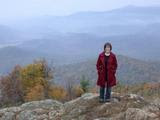
Last Friday I finally got around to seeing Tate's summer/autumn blockbuster Magritte show. There was a special evening viewing for Tate members and a visit from broadcaster Jon Snow in his capacity as head of the Tate Members' Committee. He was a genial speaker and did his best to fly the flag for increasing Tate's membership. I spoke with him briefly after his talk and he was very pleasant and obliging, signing autographs when asked.
The exhibition itself was worth seeing for the usual reasons, namely bringing together a large number of works, many never having been on display in the UK before, and showing another dimension to Magritte's oeuvre by including some of his commercial output, personal photographs and home movies. In that sense it bears some resemblence to the recent Picasso: Peace and Freedom and Nam June Paik exhibitions.
The actual experience of being in the first gallery was surreal in a sonic sense. It was an extremely windy night and noises from the roof (which at times sounded like you were beneath a bowling alley) combined with the periodic squeaking of a visitor's folding portable seat was distinctly unsettling. The grey and wooden walls, occasionally glaring lights and darkened windows added to an atmosphere heavy with uncertainty. Perhaps it was just my height or where I was standing in relation to the pictures, but I found the lighting to be overly harsh at times and dazzling to the point of obscuring the works. This may not have been an issue in the daytime, but it did affect how I was able to look at some of the paintings. One stand out in the first section was The Age of Fire which was far closer to Dali and Ernst in its use of Surrealist imagery than to Magritte's usual subjects.
Because the rooms were arranged thematically rather than chronologically, it was easy to see recurring ideas, such as the pipe. Works spanning twenty years were grouped together, making the interplay between image and language more interesting. Two versions of The Flavour of Tears hung side by side, possibly for the first time since leaving Magritte's studio, since each was created for a patron who didn't know of the other's commission. Artistically they weren't Magritte's strongest work, but raised questions of originality and reproduction similar to those Marcel Duchamp considered in his readymades and miniature versions of his best-known works, the Boites en Valises.
The final galleries were easier on the eyes, decorated in soothing blues to reflect the streetscapes of day and night and the sky of Golconda. There were also several female nudes and a gallery of erotic illustrations (discreetly curtained off from the main gallery space). Overall it was an impressive show in terms of quality and quantity and will doubtless pull a similar number of visitors when it moves on to Vienna next month.

No comments:
Post a Comment